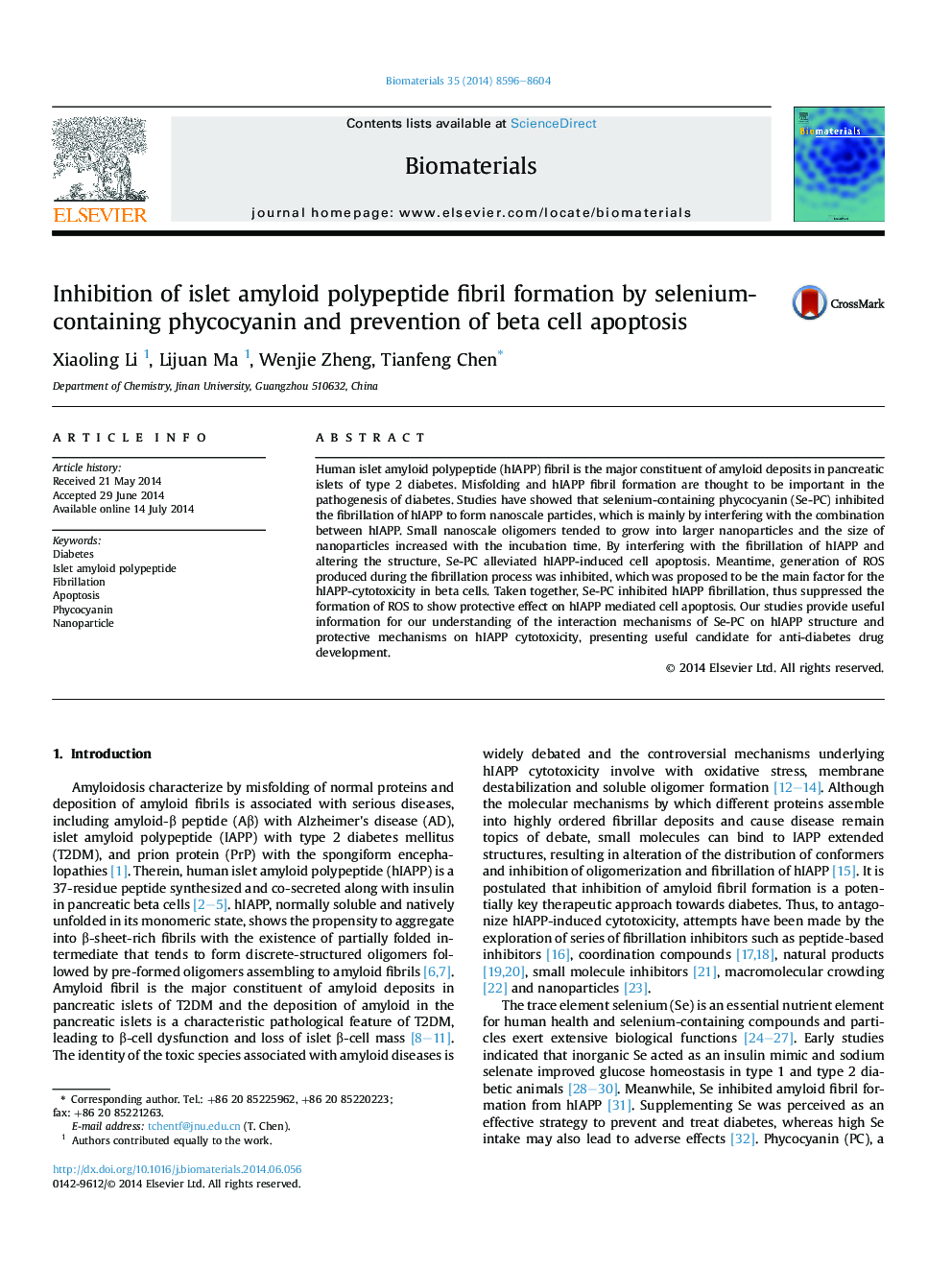| Article ID | Journal | Published Year | Pages | File Type |
|---|---|---|---|---|
| 10227378 | Biomaterials | 2014 | 9 Pages |
Abstract
Human islet amyloid polypeptide (hIAPP) fibril is the major constituent of amyloid deposits in pancreatic islets of type 2 diabetes. Misfolding and hIAPP fibril formation are thought to be important in the pathogenesis of diabetes. Studies have showed that selenium-containing phycocyanin (Se-PC) inhibited the fibrillation of hIAPP to form nanoscale particles, which is mainly by interfering with the combination between hIAPP. Small nanoscale oligomers tended to grow into larger nanoparticles and the size of nanoparticles increased with the incubation time. By interfering with the fibrillation of hIAPP and altering the structure, Se-PC alleviated hIAPP-induced cell apoptosis. Meantime, generation of ROS produced during the fibrillation process was inhibited, which was proposed to be the main factor for the hIAPP-cytotoxicity in beta cells. Taken together, Se-PC inhibited hIAPP fibrillation, thus suppressed the formation of ROS to show protective effect on hIAPP mediated cell apoptosis. Our studies provide useful information for our understanding of the interaction mechanisms of Se-PC on hIAPP structure and protective mechanisms on hIAPP cytotoxicity, presenting useful candidate for anti-diabetes drug development.
Related Topics
Physical Sciences and Engineering
Chemical Engineering
Bioengineering
Authors
Xiaoling Li, Lijuan Ma, Wenjie Zheng, Tianfeng Chen,
